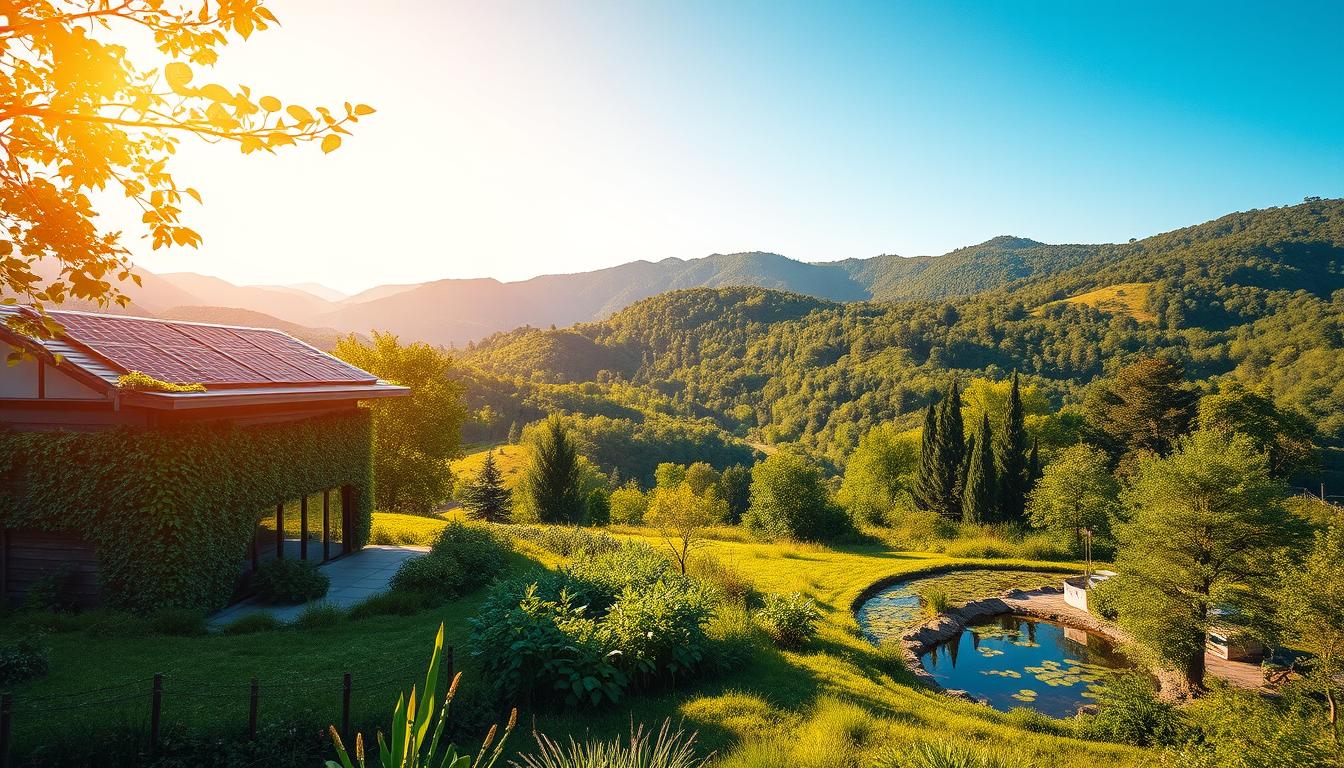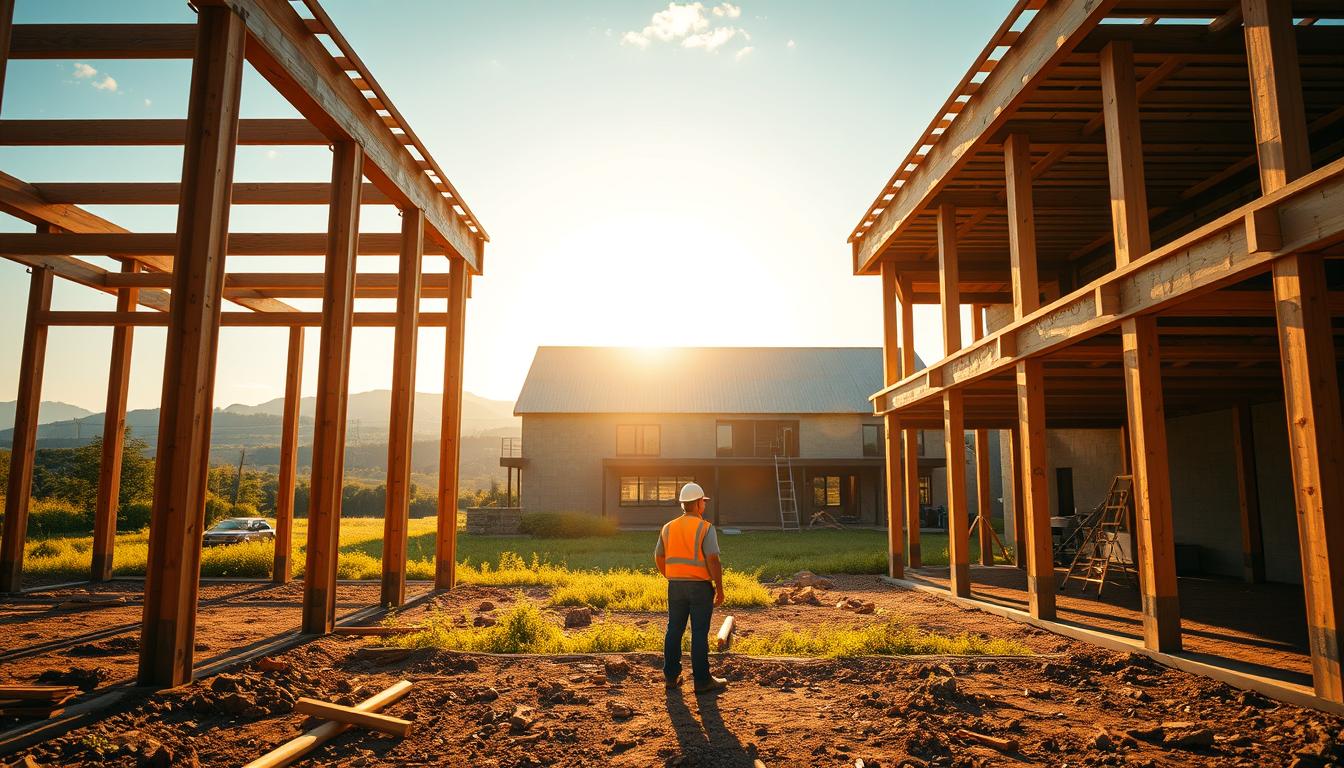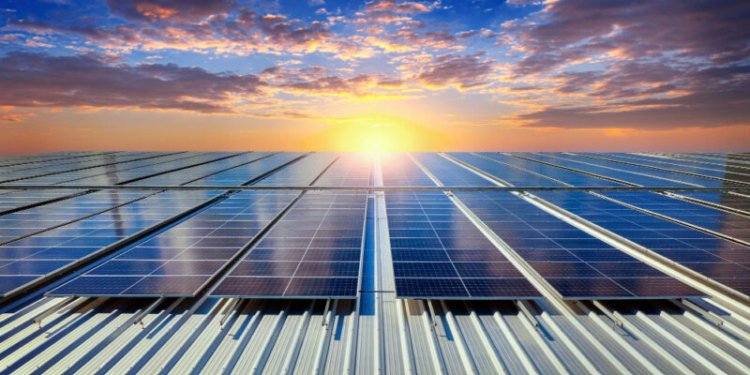Can thoughtful design and everyday choices really change the way our communities cope with climate risk?
The term sustainable habitat describes an integrated framework that aligns shelter, essential services, and resilience with social equity. This guide links high-level sustainability principles to practical building and neighborhood practices that reduce environmental impact over a structure’s full life cycle.
Readers will learn how systems thinking ties home-level choices to city services, and how measurable outcomes like reduced energy and water use, better indoor air, and occupant satisfaction track real impact.

We preview definitions, SDG context, life-cycle methods, design strategies, and a case study on space-efficient solutions. Expect clear steps to turn development goals into on-the-ground opportunities that improve health, equity, and long-term costs.
Key Takeaways
- Understand the integrated definition of a sustainable habitat and its role in the built environment.
- See how life-cycle thinking improves energy, water, and material use in buildings.
- Learn practical practices for resilient homes and safer community spaces.
- Recognize metrics to measure impact, from resource use to occupant satisfaction.
- Find action points that link individual choices to neighborhood and city outcomes.
What is a sustainable habitat and why it matters now
Today’s buildings must do more than shelter people; they must support livelihoods and withstand shocks. A clear definition ties safe shelter to inclusive services, economic opportunity, and environmental safety within the built environment.
Defining a balanced, inclusive, disaster‑resilient built environment
The term sustainable habitat means adequate housing plus dependable utilities, health access, and social equity. It covers governance and maintenance systems that keep services affordable and reliable over time.
From shelter and services to livelihoods and environmental safety
Physical choices in orientation, windows, and roof design link directly to reliable water, sanitation, electricity, and clinic access. Elevating structures, strengthening envelopes, and adding system redundancies protect health and continuity during floods, heat waves, or storms.
Efficient building design also cuts noise and poor air exposure, boosting well‑being and productivity. Thoughtful design lowers environmental burden while improving daily life and reducing risk to people and property.
Framing sustainability: social, economic, and environmental dimensions in the built environment
SDG 11 frames inclusive, safe, and resilient cities as a priority for policy and local action. At the neighborhood level, success means reliable water and sanitation, stable electricity, and nearby health services that raise user satisfaction and well-being.
SDG 11 and the future of inclusive, safe, resilient cities
Prioritizing these services translates global targets into tangible benefits. Indicators tied to access and reliability show where investment yields the largest social return.
Urbanization: opportunities, challenges, and community scale impacts
Urbanization brings economic opportunities and denser services, but it also creates resource stress and uneven development. Balanced policy and design can steer growth to reduce inequity and environmental impact.
Environmental sciences offer models and assessment tools to map synergies and trade-offs and to avoid greenwashing. Community engagement helps surface local needs so parcel design—roof choices, facades, and site planning—aligns with broader city goals. When good design repeats across neighborhoods, small decisions scale into substantial urban impact.
Lifecycle thinking for buildings: from materials to operation and end-of-life
A life-cycle approach treats a project as a chain of linked stages: material extraction, manufacture, transport, construction, use, maintenance, and end-of-life. This cradle-to-grave view helps teams spot the biggest environmental and social costs early.
Life cycle sustainability assessment and whole‑building performance
Life cycle sustainability assessment (LCSA) merges environmental sciences with social and economic metrics. It creates a decision-ready comparison of whole‑building performance. Models and tools let designers evaluate trade-offs at the right scale.
Reducing embodied and operational carbon across the cycle
Major impact drivers include embodied carbon in materials, operational energy and water, and disposal. Efficiency and system optimization cut operational loads. Smart material choices and detailing lower embodied impacts and ease maintenance.

Practical steps: inventory resource flows, choose lower‑carbon assemblies, design for durability and deconstruction, and plan reuse or take‑back. Transparent impact reporting supports better portfolio decisions and reduces pressure on the earth system.
Green building principles that elevate human health and environmental performance
Green design aims to lower environmental impact while boosting occupant health and productivity. Simple choices in siting, orientation, and envelope performance deliver big wins in day‑to‑day comfort and long‑term costs.
Efficient use of energy, water, and resources
Prioritize climate‑aware orientation, high‑performance envelopes, and right‑sized HVAC to cut energy demand. Integrate rainwater capture and low‑flow fixtures to conserve water and reduce utility bills.
Design, construction, operation, maintenance, and removal as a system
Treat each building as an interconnected system. Early decisions on layout and materials shape construction methods, maintenance needs, and end‑of‑life recovery.
Reducing waste, pollution, and degradation throughout the building’s life
Plan accurate take‑offs, favor modular assemblies, and set onsite recycling protocols to reduce amount of construction waste. Specify low‑emitting finishes and robust ventilation technologies to protect indoor air quality.
Co‑benefits include lower utility costs, measurable impact reductions that support development goals, and healthier occupants. Choose non‑toxic, reusable, and regionally appropriate building materials and technologies to close the loop on resource use.
Sustainable habitat design essentials
Mapping a site’s sun path, winds, and vegetation guides early decisions that shape long-term comfort and energy use. Good site analysis lets a team use natural systems to manage solar gain and reduce cooling loads while protecting daylight.
Siting, orientation, and solar gain management
Place massing and windows to favor low winter sun and shade high summer angles. Use porches, awnings, trees, and exterior screens to block unwanted heat. On hot, humid sites, roof geometry and shading are as important as glazing choice.
Daylighting and lighting systems for efficiency and comfort
Skylights or sun tunnels bring daylight deeper into rooms. Pair daylighting with efficient fixtures and automatic controls to cut electric lighting demand and improve visual comfort.
Thermal envelope: roof, windows, and air sealing strategies
Continuous insulation, tight air sealing, and moisture control protect assemblies and stabilize indoor conditions. Specify double‑glazed glass for lower conductive losses. Consider bamboo shades or exterior screens where high-angle sun needs tempering without blocking breezes.
Early-stage checklist: site sun map, massing options, window-to-wall ratios, overhang dimensions, passive ventilation paths, and envelope details that are hard to retrofit. Balance daylight goals with measurable targets for cooling loads and occupant comfort.
Water strategies: access, rainwater harvesting, and sanitation services
Define a diversified approach that secures access water from municipal lines, roof catchments, and onsite storage sized for seasonal needs. This mix reduces risk and supports daily routines during shortages.
Collecting, treating, and storing
Collect rain from roof catchments with gutters and a first‑flush diverter. Use multi‑stage filtration and disinfection so stored supplies suit potable and non‑potable uses.
Place tanks underground, beneath floors, or inside core columns. Include controls for flow, overflow, and easy maintenance in the overall system.
On‑site sanitation and resource recovery
Small septic systems or semi‑centralized biogas digesters can accept human and organic waste. Digesters produce biogas for cooking or hot water and yield liquid fertilizer for landscaping.
Demand reduction and resilience
Use low‑flow fixtures, graywater reuse, and drought‑adapted planting to reduce amount of potable water needed. Add backup pumps, gravity loops, and quality monitoring to sustain services during outages.
Good design aligns water, energy, and nutrient cycles so a resilient habitat delivers closed‑loop benefits for people and ecosystems.
Energy efficiency and passive systems for comfort and resilience
Designing for movement of air and controlled daylight helps buildings stay comfortable with less energy. Passive measures cut loads and make the system more resilient during grid outages.
Stack ventilation uses buoyancy: warm air exits through high openings like upper windows or operable skylights and draws cool air from low inlets. Interior vertical connections and controllable apertures stabilize indoor air quality. Ceiling fans assist when natural flow is weak.
Green roofs and shading
Vegetated roof systems can lower ambient air temperature by about 5°F. Brise‑soleil, bamboo jali, and exterior louvers cut solar gain on glazed atriums while preserving daylight.
Skylights, sun tunnels, and lighting
Sun tunnels transmit daylight into deep plans with low glare. Pair skylights with reflective interior finishes and dimmable lighting controls to avoid overheating and reduce artificial loads.
Tuning and resilience
Tune windows, louvers, and vents for daily and seasonal climate cycles while keeping security and weather protection in mind. Use backup controls, battery fans, or efficient mechanicals sized after passive measures. Rule of thumb: maximize free cooling, right‑size equipment, and verify performance through commissioning.
Materials and construction practices for lower impact and higher durability
Material choices shape how well buildings resist moisture, heat, and long-term wear. Favor regional and renewable options to cut transport emissions and support local markets.
Renewable and regional resources
Use bamboo, responsibly sourced wood, straw, dimension stone, and earth-based products where they suit the project. These building materials lower embodied carbon and keep resources in local cycles.
Recycled content and industrial by‑products
Incorporate recycled metals, demolition debris, and vetted industrial by‑products like foundry sand or coal‑combustion products to conserve resources and reduce impact. Porcelain tile is a low-absorption, low‑carbon flooring option in many climates.
Choosing assemblies for climate resilience
For humid or flood-prone sites, elevate structures and use moisture‑resistant finishes. Specify rot‑resistant wood species, corrosion‑resistant metals, and protected roof edges. Prefer double‑glazed glass and window details that reduce condensation and improve comfort.
Construction best practices
Limit concrete to essential structural roles to curb carbon and transport burdens. Protect materials on site from moisture, follow tight detailing, and commission assemblies to ensure long life and steady energy performance.
User satisfaction in sustainable habitat: services, health, and community
What people feel every day — light, noise, and reliable utilities — strongly shapes satisfaction with a home and neighborhood.

Reliable electricity, water and sanitation, and accessible health care
Dependable energy, clean water, and nearby health services top user priorities in surveys. These services support daily routines and reduce stress for families.
Acoustics, air quality, safety, and adequate lighting
Indoor environment factors like low noise, good air quality, clear lighting, and safety drive perceived comfort.
Improving these elements often yields faster gains in well‑being than cosmetic upgrades.
Community spaces, inclusivity, and housing affordability
Shared spaces and culturally responsive design build social ties and long‑term occupancy. Affordability keeps dwellings accessible.
Design and operations should include utility redundancies, clear maintenance plans, and feedback loops at handover and post‑occupancy.
Measure satisfaction through short surveys and targeted interviews to guide upgrades that raise quality and reduce complaints in the built environment.
Sustainable habitat in practice: design insights from a rainforest case
A rainforest prototype shows how compact circular plans and raised floors tame floods and cut material use.
Elevated, circular plan and flood resilience
The home sits on 15‑ft columns with a central column that houses a filtered rainwater tank. Nearby trees share load paths, reducing concrete and making the circular plan structurally efficient.
Raised construction reduces flood risk, lowers wind pressures, and uses less material for the same safe floor area.
Bamboo roof assembly and passive cooling
The pitched 40° bamboo roof uses Guadua weberbaueri: bamboo framework, pelupuh shingles, asphalt liner, and a second pelupuh layer. Treatments include rubber tree oil and boric acid for durability.
Stack ventilation uses operable windows and skylights plus ceiling fans. Shading—green roof cover, brise‑soleil, and bamboo jali—limits heat gain while preserving daylight and air flow.
Water, daylight, and materials palette
Roof catchment feeds a filtered storage tank in the central column. The water system supplies potable and non‑potable uses via simple controls.
Daylighting relies on four skylights, sun tunnels, floor‑to‑ceiling windows, and a central atrium garden that links nature and interior space.
Materials mix porcelain tile, double‑glazed windows, steel framing, and Brazil nut wood, with minimal concrete to cut carbon and boost durability.
Conclusion
Practical building choices can turn climate challenges into clear opportunities for safer, healthier places.
Good design aligns services, operations, and the built form so a sustainable habitat delivers resilience across the natural environment and at neighborhood scale.
Focus on life cycle priorities: lower embodied carbon, efficient operations, and durable, reusable assemblies. Use environmental sciences and tested models to guide material and construction decisions.
Prioritize user outcomes: dependable water and sanitation, reliable power, comfort from high‑performing windows and right‑sized systems, and smart energy efficiency. Adopt proven technologies—rainwater capture, passive cooling, and modest solar—to fit climate and culture.
Specify responsible building materials and local wood where appropriate. Communities, designers, and policy authors can work together to scale solutions that protect the earth while improving health and community life.
FAQ
What is a sustainable habitat and why does it matter now?
A sustainable habitat is a built environment that balances human needs with ecological health, disaster resilience, and fair access to services. It matters now because rapid urbanization, climate change, and resource limits raise risks for water, energy, and food security. Good design reduces carbon, preserves natural systems, and boosts community wellbeing.
How do social, economic, and environmental dimensions shape building projects?
Successful projects integrate social inclusion, affordable livelihoods, and environmental protection. Planners use frameworks like SDG 11 to guide safe, resilient cities while managing urban growth, infrastructure, and community-scale impacts. This approach improves health, cuts life cycle costs, and strengthens local economies.
What is life cycle thinking for buildings and why is it important?
Life cycle thinking reviews materials, construction, operation, maintenance, and end-of-life impacts. It helps lower embodied and operational carbon by prioritizing low-impact materials, efficient systems, and plans for reuse or recycling. This reduces resource demand and long-term emissions.
Which green building principles most improve human health and environmental performance?
Focus on efficient energy and water use, good indoor air quality, natural lighting, and waste reduction. Design buildings as integrated systems so shape, materials, and mechanical systems work together. That improves comfort, cuts pollution, and extends service life.
How do siting and orientation influence solar gain and comfort?
Proper siting and orientation maximize passive heating and cooling. Orienting living spaces to the sun, using shading devices, and choosing window placement reduce mechanical heating and cooling needs. This saves energy and enhances daylighting without costly systems.
What are practical daylighting and lighting system strategies?
Use skylights, sun tunnels, and high-performance glazing to bring daylight deep into rooms. Combine with efficient LED fixtures, daylight sensors, and zoned controls to cut energy use while maintaining visual comfort and healthy circadian rhythms.
How do roofs, windows, and air sealing affect thermal performance?
A tight thermal envelope—insulated roof, high-quality windows, and proper air sealing—reduces heat transfer and drafts. That lowers heating and cooling loads and improves indoor air quality when paired with controlled ventilation systems.
What are effective water strategies for homes and communities?
Collect rainwater from roofs into storage tanks, design for seasonal use, and treat water on-site when needed. Integrate sanitation that links to resource recovery—such as biogas from organic waste and liquid fertilizer—to close nutrient cycles and reduce demand on central systems.
Which passive systems improve comfort and resilience in hot, humid climates?
Stack ventilation, cross-ventilation, shading, green roofs, and reflective surfaces all lower indoor temperatures without heavy mechanical cooling. Passive cooling combined with durable materials helps buildings withstand humidity, flood risk, and heat events.
What materials offer lower impact and higher durability?
Use renewable regional resources like bamboo and sustainably harvested wood, plus earth and stone where appropriate. Incorporate recycled metals, reclaimed timber, and industrial by-products to reduce embodied carbon. Choose materials based on local humidity, flood exposure, and thermal needs.
How do you choose materials for humid or flood-prone sites?
Prioritize rot-resistant materials, elevated foundations, breathable wall systems, and corrosion-resistant metals. Design for easy drying and replacement of elements after flooding. Select finishes and assemblies that tolerate moisture without mold or rapid degradation.
How does design affect access to services, health, and community wellbeing?
Buildings that provide reliable electricity, clean water, sanitation, and accessible health services support better outcomes. Good acoustics, lighting, and air quality improve comfort. Public spaces and affordable housing promote social inclusion and resilience at the neighborhood scale.
What are examples of nature-connected design in a rainforest setting?
Elevated structures reduce flood risk while preserving soils. Bamboo roofs and passive cooling work well in humid climates. Rainwater harvesting, atriums, and shaded courtyards create natural ventilation, daylight, and strong indoor-outdoor connections that support biodiversity.
How can communities reduce carbon and resource use during construction?
Reduce material volumes, prioritize low-carbon and regional products, reuse demolition debris, and optimize designs for prefabrication. Apply life cycle assessments to compare options and steer procurement toward low-impact suppliers and contractors.
What technologies support energy efficiency and renewable integration?
High-performance glazing, heat pumps, efficient HVAC controls, LED lighting, photovoltaic panels, and battery storage all help. Smart controls and demand-management systems match energy use to renewable supply and improve overall building performance.
How do maintenance and end-of-life planning extend building value?
Design for easy access, replaceable components, and material separation to enable repair, reuse, and recycling. A planned maintenance schedule preserves performance and reduces lifecycle costs while supporting circularity goals.





